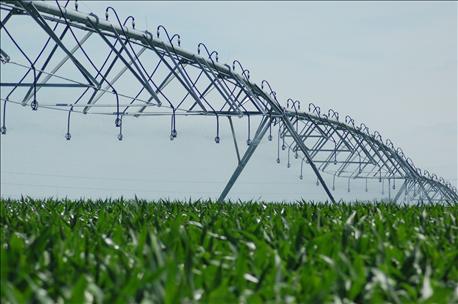
Editor's note: You can listen to my conversation with Mike Zwingman and Keith Byerly using the audio player at the end of this blog.
July is here, many cornfields are not far away from tasseling and a number of growers across Nebraska are gearing up for a shot of in-season nitrogen. We've heard a lot about the importance of splitting up nitrogen applications to mitigate loss, but what about applying in place in the row?

DIGGING DEEPER: Keith Byerly explains it's important not to respond too aggressively to heat stress and irrigate right away, because when it comes down to it, corn plants are lazy — that is, they aren't going to put any more energy into developing roots than they have to.
In the latest Nebraska Notebook, a podcast focusing on critical crop-related issues in Nebraska throughout the growing season, we visit with Mike Zwingman, agronomy research and development manager at Central Valley Ag about not only just the right timing and the right rate, but also the right placement of nitrogen with the right distance to the active root zone to take up that N in the most efficient manner possible.
"A while back UNL [University of Nebraska-Lincoln] did a study where they found 63% of the nitrogen the plant takes up is within 7 inches of the stalk," says Zwingman. "We've got to talk about distance to move nitrogen to get to an active root zone, how much water that would take, how much time it would take."
While crop water uptake is affected by active root zone development, root development is also impacted by soil moisture, and different places in Nebraska caught different amounts of rain in the month of June.
In the latest Nebraska Notebook, we also visit with Keith Byerly, advanced cropping systems manager at CVA, on how soil moisture from recent rains has impacted root development.
Byerly notes those fields that missed out on rainfall in June, while possibly a little heat-stressed, are putting down active roots over 2 feet down in some places, compared to those fields that caught the 1-inch rains where root development was more limited. That's why it's important not to respond too aggressively to heat stress and irrigate right away, he says.
"Hopefully, we haven't hindered the root development process or made [corn plants] lazy, because in the grand scheme of things, corn plants are lazy," Byerly says. "They're not going to put any more energy into developing roots than they have to. They're not going to put any more energy into pulling water up from a deeper depth than they have to. It's kind of on us to manage those stresses going in to force that plant to want to look deeper for water in that profile."
About the Author(s)
You May Also Like






